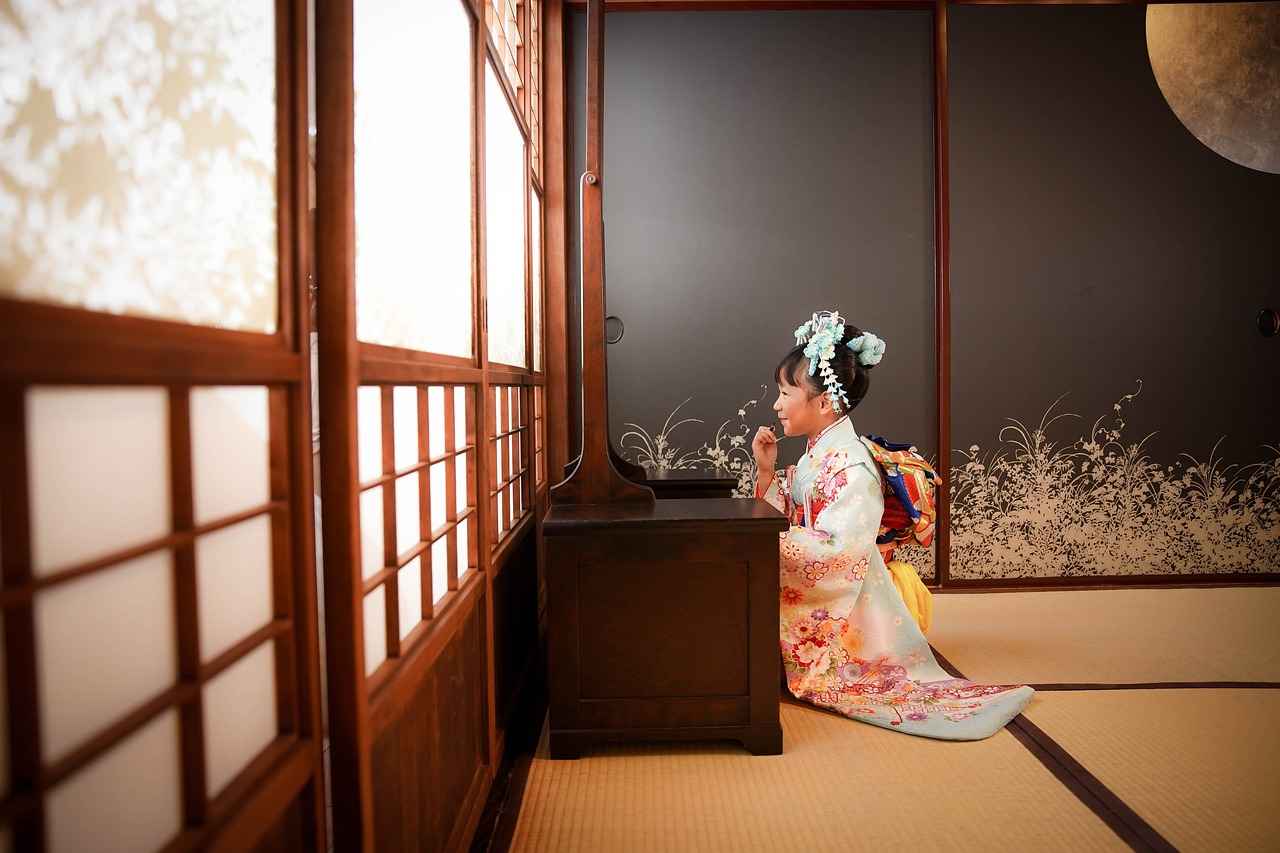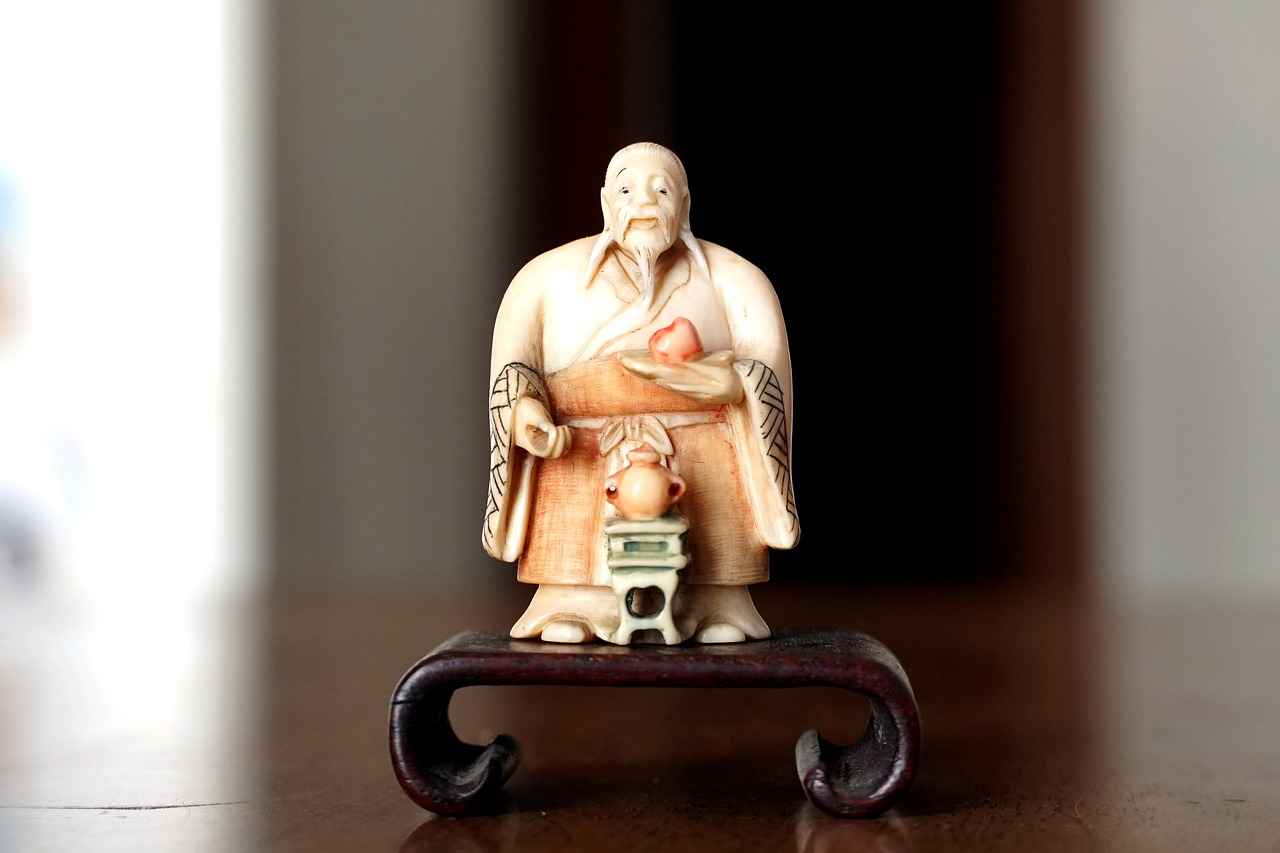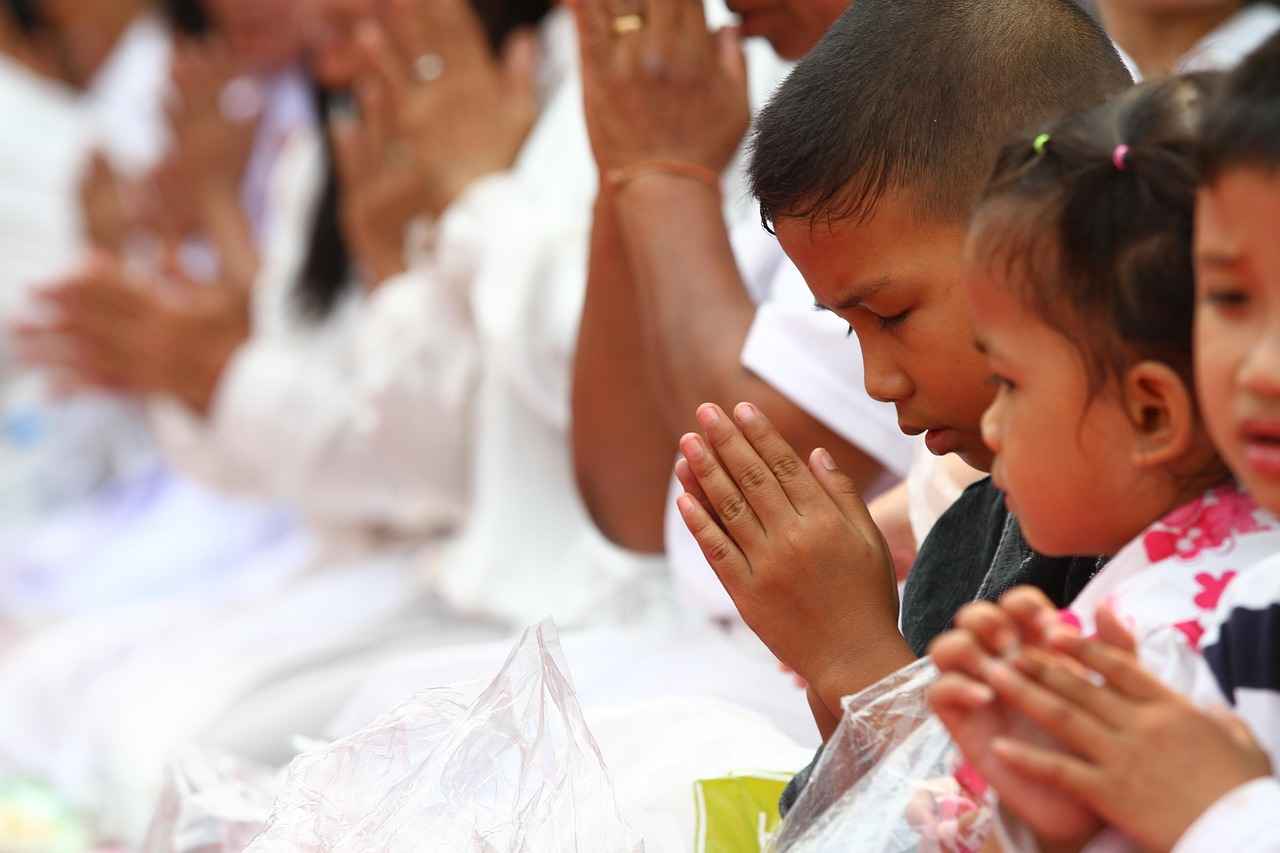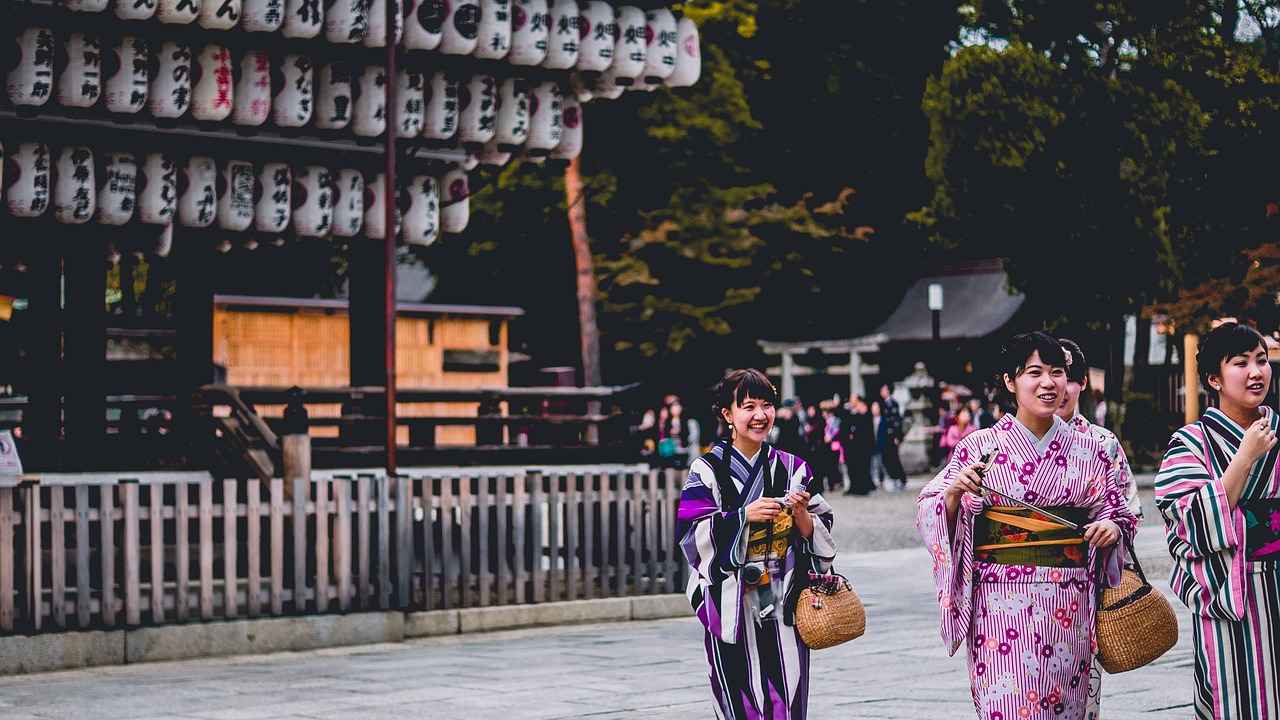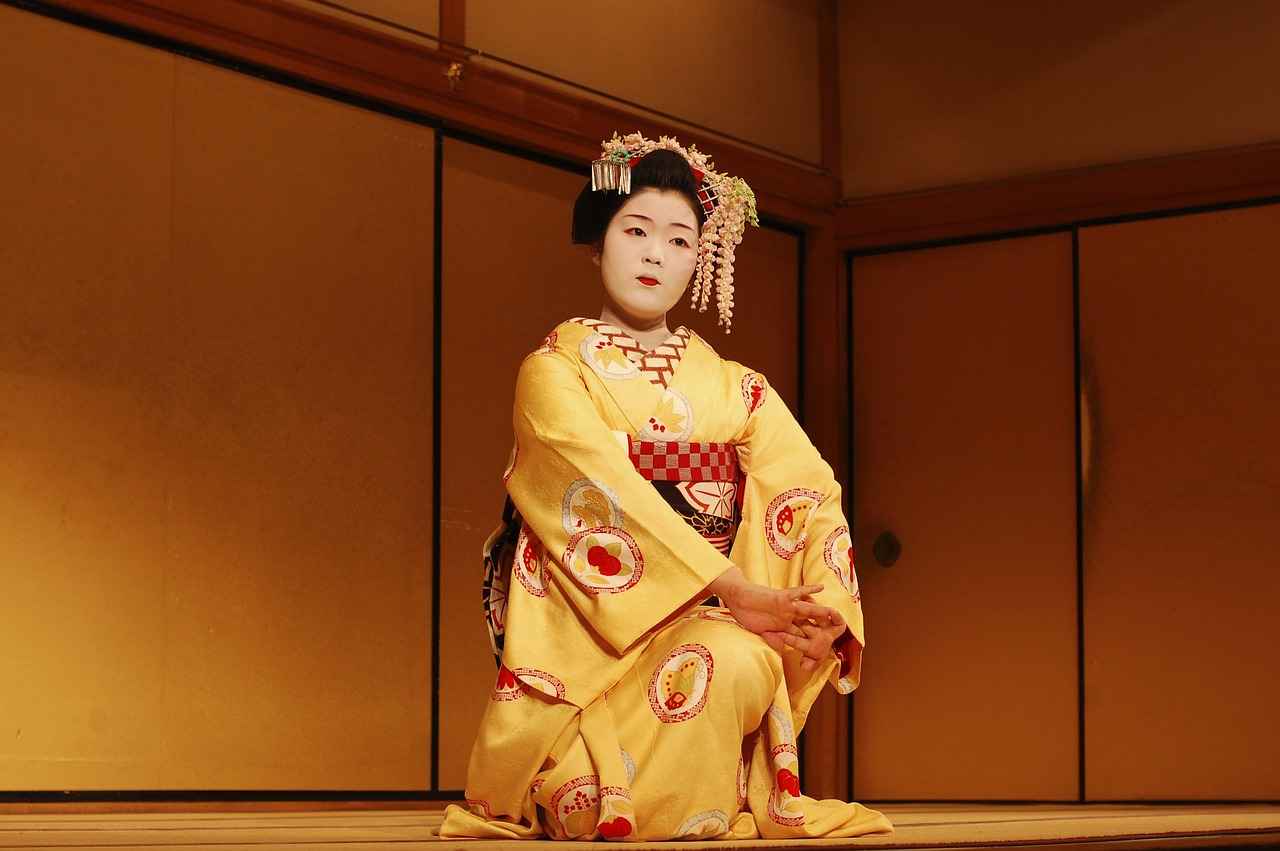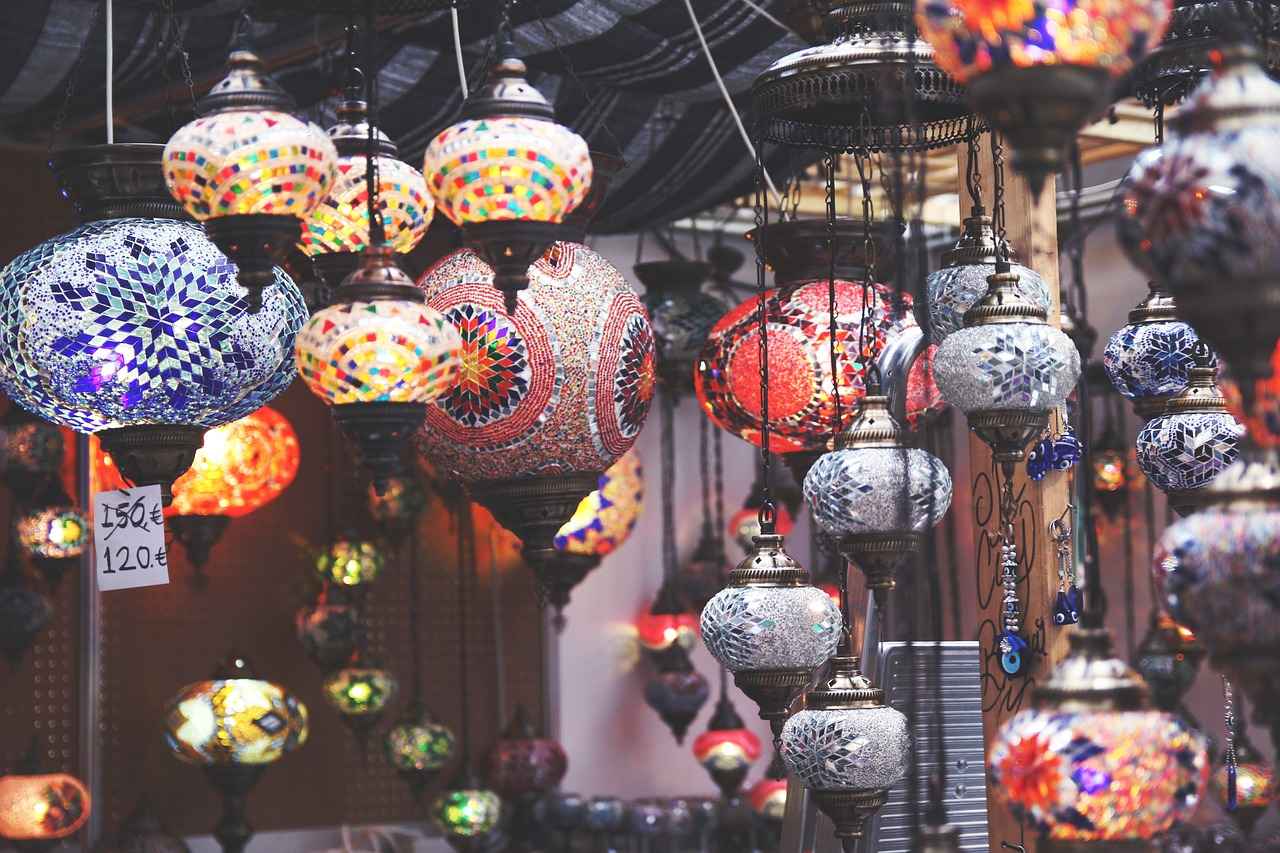This article highlights the unique advantages of wearing a kimono in summer, focusing on its cultural significance, comfort, and style, while offering practical insights for both enthusiasts and newcomers alike.
1. The Cultural Significance of Kimonos
Kimonos are more than just garments; they represent a rich cultural heritage and traditions in Japan. Wearing a kimono allows individuals to connect with a history that spans centuries, enhancing appreciation and respect for this timeless attire. The intricate designs often tell stories or symbolize various aspects of Japanese culture, making each piece unique.
2. Breathable Fabrics for Summer Comfort
Typically crafted from lightweight, breathable materials such as cotton and silk, kimonos are an ideal choice for the summer heat. These fabrics provide comfort while allowing for airflow, ensuring that wearers stay cool even on the hottest days.
3. Traditional vs. Modern Kimonos
Understanding the differences between traditional and modern kimonos can help you choose a style that aligns with your personal taste while respecting cultural roots. Traditional kimonos often feature elaborate designs and are worn for special occasions, while modern variations may incorporate contemporary patterns and cuts for everyday wear.
4. Choosing the Right Fabric
Selecting the appropriate fabric is crucial for comfort. Lightweight options like cotton are perfect for hot weather, while silk offers a touch of elegance for special occasions. It’s essential to consider the event and weather when making your choice.
5. Seasonal Patterns and Colors
Summer kimonos are often adorned with vibrant colors and floral patterns, reflecting the beauty of the season. This allows wearers to express their individuality and embrace the lively spirit of summer.
6. Styling Tips for Summer Outfits
Accessorizing a kimono can enhance its appeal. Consider pairing it with simple sandals or statement jewelry to create a fashionable yet comfortable summer look that stands out in any setting.
7. Versatility in Occasions
Kimonos are versatile garments suitable for various occasions, from casual outings to formal events. This adaptability makes them a valuable addition to any summer wardrobe.
8. Layering Techniques for Different Looks
Effective layering techniques can create diverse looks with your kimono, allowing for adaptability to changing temperatures and settings. For instance, pairing a kimono with a light tank top or a fitted dress can provide both style and comfort.
9. Footwear Pairings for Kimonos
Choosing the right footwear can enhance the overall look of your kimono outfit. Options like comfortable sandals or stylish flats can be perfect for summer wear, balancing comfort with elegance.
10. Caring for Your Kimono
Proper care and maintenance are essential for preserving the beauty and longevity of your kimono. Regular cleaning and careful storage can keep your kimono in pristine condition for years to come.
11. Sustainable Fashion Choices
Kimonos can also be a sustainable fashion choice, especially when opting for vintage or second-hand pieces. This promotes eco-friendly practices while allowing you to embrace stylish attire.
12. Embracing the Kimono Lifestyle
Wearing a kimono can be more than just a fashion statement; it fosters a lifestyle that appreciates tradition, craftsmanship, and cultural exchange, enriching personal experiences and connecting wearers to a broader community.

1. The Cultural Significance of Kimonos
Kimonos are more than mere clothing; they are a profound representation of Japan’s rich cultural heritage and traditions. Each kimono tells a story, reflecting the history, artistry, and values of Japanese society. The intricate designs and patterns often symbolize various elements of nature, seasons, and even personal milestones. Understanding the significance of kimonos enhances our appreciation for this timeless attire, allowing us to connect with the values and aesthetics of Japanese culture.
Historically, kimonos have been worn for centuries, evolving through different eras and reflecting societal changes. The Meiji Restoration marked a pivotal shift, as Western influences began to permeate Japanese fashion. Despite this, kimonos have retained their status as a symbol of elegance and tradition. Today, they are worn during special occasions such as weddings, festivals, and traditional ceremonies, allowing individuals to showcase their cultural pride and identity.
Moreover, the art of kimono-making involves meticulous craftsmanship. Each piece is often hand-stitched and dyed using techniques passed down through generations. This dedication to artistry not only preserves cultural traditions but also supports local artisans and promotes sustainable practices within the fashion industry.
Wearing a kimono can also foster a deeper understanding of Japanese customs. For instance, the way a kimono is worn can signify a person’s age, status, or the occasion being celebrated. This layered meaning adds to the garment’s allure, making it a fascinating subject for both enthusiasts and newcomers alike.
In conclusion, kimonos are not just beautiful garments; they are vessels of cultural expression and history. By embracing and understanding their significance, we can cultivate a greater respect for this iconic attire and the traditions it represents.

2. Breathable Fabrics for Summer Comfort
Kimonos are renowned for their lightweight and breathable fabrics, primarily crafted from materials such as cotton and silk. These fabrics are specifically chosen to provide maximum comfort during the hot summer months, allowing the skin to breathe and stay cool. The natural fibers used in kimonos help wick away moisture, making them an excellent choice for those sweltering days.
In addition to their practical benefits, kimonos also offer a unique blend of style and elegance. The lightweight nature of cotton kimonos makes them perfect for casual outings, while silk kimonos can elevate your look for more formal occasions. The versatility in fabric choice allows wearers to express their personal style while enjoying the comfort that comes with breathable materials.
Furthermore, the design of kimonos often features wide sleeves and a loose fit, which enhances airflow and promotes a feeling of freedom. This is particularly important during the summer when tight-fitting clothing can lead to discomfort. Kimonos allow for ease of movement, making them ideal for various summer activities, from leisurely strolls in the park to attending outdoor events.
When choosing a kimono for summer wear, consider seasonal patterns and colors that reflect the vibrancy of the season. Bright floral prints and lively hues not only enhance the aesthetic appeal but also contribute to a cheerful summer wardrobe. Additionally, layering a lightweight kimono over a simple tank top and shorts can create a chic and effortless look.
In conclusion, the combination of breathable fabrics, stylish designs, and cultural significance makes kimonos an exceptional choice for summer attire. By embracing kimonos, you can enjoy both comfort and elegance, making them a staple in your summer wardrobe.
3. Traditional vs. Modern Kimonos
Exploring the differences between traditional and modern kimonos can greatly assist you in selecting a style that resonates with your personal taste while still honoring cultural roots. The kimono, a symbol of Japanese heritage, has evolved over the years, leading to a fascinating contrast between its traditional and modern forms.
1. Understanding Traditional Kimonos
Traditional kimonos are often characterized by their intricate designs, rich fabrics, and historical significance. Made from materials like silk, these garments feature elaborate patterns and colors that reflect the wearer’s status, age, and occasion. The obi, or sash, is another essential element, often tied in a specific way to signify different meanings. Wearing a traditional kimono often requires a certain level of skill in dressing, as it involves multiple layers and precise folding techniques.
2. The Rise of Modern Kimonos
In contrast, modern kimonos have adapted to contemporary fashion trends. They often feature simplified designs and are made from more accessible fabrics like cotton or polyester, making them easier to wear and maintain. Modern kimonos may incorporate bold colors and patterns, appealing to a younger audience looking to express their individuality. These garments are often styled in a more casual manner, allowing for versatility in various settings.
3. Choosing the Right Style for You
When selecting between traditional and modern kimonos, consider your personal style and the occasion. If you are attending a formal event or cultural celebration, a traditional kimono may be more appropriate, showcasing the rich heritage of Japan. On the other hand, for casual outings or summer festivals, a modern kimono could be the perfect choice, offering comfort and ease of movement.
4. Conclusion
Ultimately, whether you lean towards traditional or modern kimonos, both styles offer unique benefits and allow wearers to connect with Japanese culture. By understanding the differences, you can make an informed choice that reflects your personal style while honoring the timeless elegance of the kimono.
4. Choosing the Right Fabric
Choosing the Right Fabric for your kimono is a vital aspect of ensuring comfort and style, especially during the hot summer months. The selection of fabric not only affects how you feel while wearing the garment but also influences its overall aesthetic appeal.
When it comes to summer wear, lightweight fabrics are essential. One of the most popular choices is cotton, which is known for its breathability and moisture-wicking properties. Cotton kimonos are perfect for casual outings, allowing for ease of movement while keeping you cool as temperatures rise. Additionally, cotton is easy to care for and can withstand frequent washing, making it a practical option for everyday wear.
On the other hand, silk is an exquisite fabric that adds a touch of elegance and sophistication to any outfit. While it may not be as breathable as cotton, silk kimonos are often chosen for special occasions, such as festivals or formal gatherings. The luxurious feel of silk against the skin can elevate your look and make you feel special, even in the heat of summer.
Another fabric worth considering is linen, which is renowned for its exceptional breathability and lightweight nature. Linen kimonos provide a relaxed, laid-back vibe, making them ideal for beach outings or picnics in the park. They also possess a unique texture that adds character to your outfit.
Ultimately, the choice of fabric should align with your personal style and the occasion. Whether you opt for the casual comfort of cotton, the elegance of silk, or the relaxed feel of linen, selecting the right fabric will enhance your overall experience of wearing a kimono.
5. Seasonal Patterns and Colors
Summer kimonos are a delightful expression of vibrancy and creativity. These garments often showcase a stunning array of colors and floral patterns that reflect the beauty of the season, allowing wearers to embrace their individuality and personal style. The use of bright hues not only captures the essence of summer but also enhances the overall aesthetic of the kimono, making it a perfect choice for warm-weather occasions.
Traditionally, summer kimonos, known as yukata, are crafted from lightweight fabrics that promote breathability. This makes them not only stylish but also practical for hot weather. The floral designs often seen in these kimonos can range from delicate cherry blossoms to bold sunflowers, each pattern telling its own story and evoking different feelings associated with the season.
Moreover, the choice of colors plays a vital role in expressing mood and personality. Bright yellows, deep blues, and soft pinks are common in summer kimonos, allowing wearers to choose shades that resonate with their personal style. For instance:
- Bright Yellow: Symbolizes happiness and energy, perfect for a cheerful summer day.
- Deep Blue: Represents calmness and tranquility, ideal for evening events.
- Soft Pink: Conveys a sense of romance and elegance, suitable for formal gatherings.
In addition to personal expression, wearing a kimono with seasonal patterns and colors can also serve as a cultural homage. By choosing designs that reflect the beauty of nature, wearers can connect with the traditional aspects of kimono wearing while enjoying the modern interpretations that celebrate individuality.
Ultimately, summer kimonos are more than just clothing; they are a canvas for self-expression, a celebration of nature’s beauty, and a bridge between tradition and contemporary fashion.
6. Styling Tips for Summer Outfits
Styling Tips for Summer Outfits
As the summer sun shines bright, it’s the perfect time to embrace the elegance and comfort of a kimono. This traditional Japanese garment not only offers a unique style but also provides versatility for various summer outings. Here are some essential tips to help you accessorize and style your kimono, ensuring you look both fashionable and comfortable.
- Choose the Right Length: Kimonos come in various lengths, from short to long. For casual summer outings, a shorter kimono can provide a breezy feel, while longer styles can lend an air of sophistication for evening events.
- Play with Patterns: Summer is the season for vibrant colors and floral patterns. Opt for kimonos with lively designs that reflect the essence of summer, allowing your personality to shine through.
- Layer Wisely: Kimonos are perfect for layering. Pair them with a simple tank top and shorts for a relaxed look or layer over a sundress for a more polished ensemble. The key is to keep the underneath simple to let the kimono stand out.
- Accessorize Thoughtfully: Accessories can elevate your kimono outfit. Consider adding a wide-brimmed hat for sun protection, statement earrings for a touch of glamour, or a stylish belt to cinch your waist and add shape.
- Footwear Matters: The right shoes can make or break your outfit. For a casual day out, opt for comfortable sandals or espadrilles. If you’re dressing up, consider wedges or elegant flats that complement your kimono’s style.
- Embrace Natural Fabrics: Ensure your kimono is made from breathable materials like cotton or linen, which will keep you cool and comfortable during hot summer days.
By following these styling tips, you can effortlessly accessorize your kimono for any summer outing, ensuring you stand out in style while enjoying the comfort it offers.
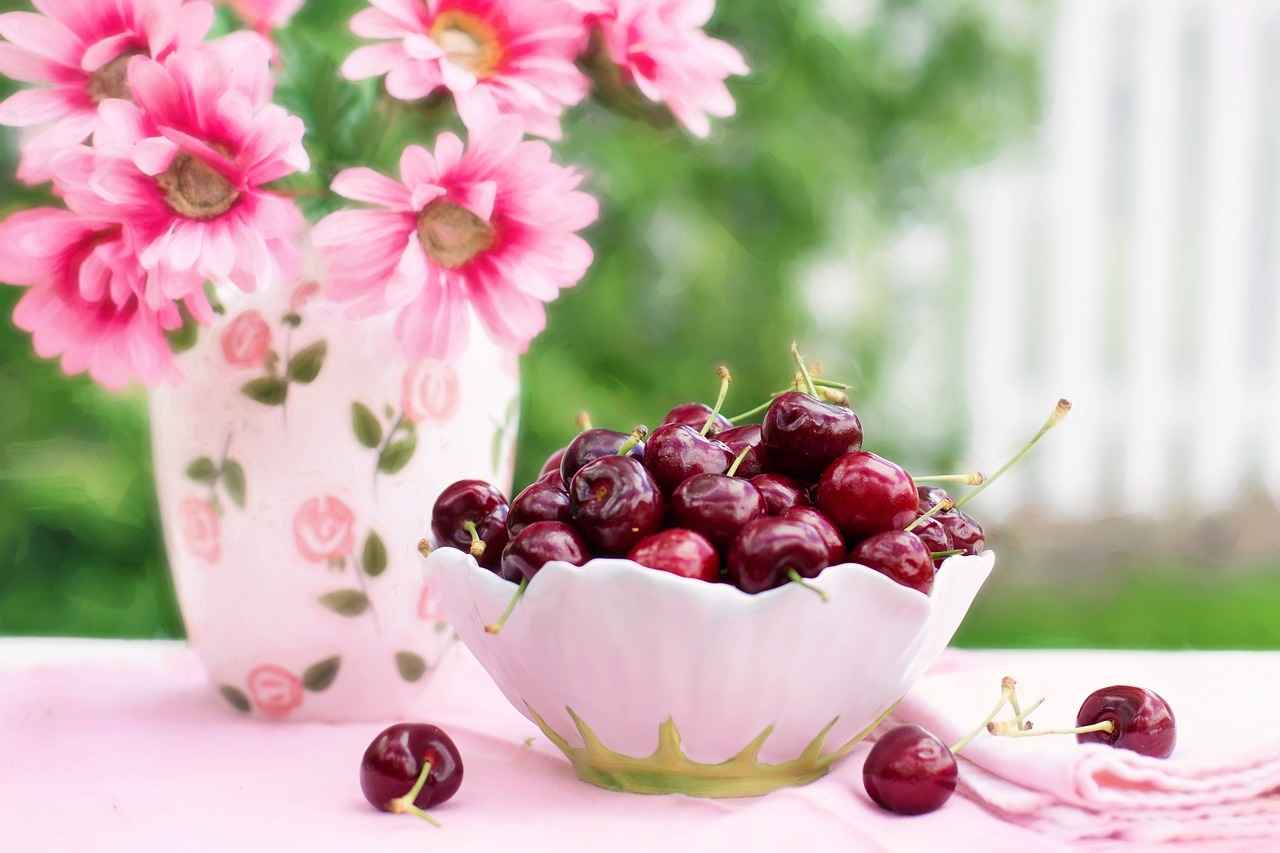
7. Versatility in Occasions
Kimonos are incredibly versatile garments that can be worn for a myriad of occasions, making them a must-have in any summer wardrobe. Their adaptability allows wearers to transition seamlessly from casual outings to more formal events, showcasing both style and cultural significance.
The beauty of kimonos lies in their flexibility. Whether you’re heading to a beach picnic, a garden party, or a formal dinner, there’s a kimono style that fits the occasion. Here’s a closer look at how kimonos can be styled for different events:
- Casual Outings: For a relaxed day out, opt for a lightweight cotton kimono paired with shorts or a sundress. This combination ensures comfort while keeping you stylish.
- Beach Wear: A kimono can serve as a chic cover-up over your swimsuit. Choose vibrant colors or floral patterns to enhance your beach look.
- Formal Events: For more elegant occasions, silk kimonos with intricate designs can be worn over a fitted dress or tailored trousers, exuding sophistication.
- Evening Gatherings: Layering a kimono over a simple outfit can elevate your evening wear. Consider adding statement accessories for a pop of personality.
To enhance the versatility of your kimono, consider the following accessories:
- Belts: Adding a belt can help define your waist and create a more structured silhouette.
- Jewelry: Statement earrings or layered necklaces can bring a modern twist to traditional attire.
- Footwear: Choose comfortable sandals for casual outings or elegant heels for formal events to complete your look.
In summary, kimonos are not just a fashion statement; they are a versatile addition to any summer wardrobe. Their ability to adapt to various occasions, paired with the right accessories, makes them a valuable choice for anyone looking to embrace both comfort and style. By understanding how to style and accessorize your kimono, you can effortlessly transition from day to night, ensuring you are always dressed appropriately for any event.
8. Layering Techniques for Different Looks
When it comes to styling a kimono, layering techniques can transform a simple outfit into a versatile fashion statement. Whether you’re dressing for a casual day out or a formal event, mastering these techniques allows you to adapt your look effortlessly to various settings and temperatures.
One effective approach to layering is to start with a lightweight base. Opt for a fitted tank top or a breathable blouse that complements the kimono’s colors and patterns. This creates a seamless foundation that enhances the overall silhouette without adding bulk.
- Accessorize Wisely: Use statement accessories like chunky necklaces or oversized earrings to draw attention and add personality to your outfit.
- Play with Textures: Combine different fabrics, such as pairing a cotton kimono with a silk scarf, to create visual interest and depth.
- Experiment with Lengths: Layering kimonos of varying lengths can create a dynamic look. For instance, a long kimono over a shorter one can add dimension and flair.
As temperatures fluctuate throughout the day, consider incorporating lightweight cardigans or shrugs under your kimono for added warmth during cooler evenings. This not only provides comfort but also maintains a stylish appearance.
Another effective technique is to use belts to cinch the waist of your kimono. This creates a more defined silhouette and allows for easy transitioning from a relaxed look to a more structured outfit. Choose a belt that matches or contrasts with your kimono for added style points.
Lastly, don’t forget about footwear. Pairing your layered kimono with the right shoes, such as sandals for a casual outing or heels for a more polished look, can complete the ensemble perfectly.
In conclusion, mastering layering techniques with your kimono not only enhances your style but also allows for adaptability in various situations. By experimenting with different fabrics, lengths, and accessories, you can create a multitude of looks that reflect your personal style while staying comfortable.
9. Footwear Pairings for Kimonos
Footwear Pairings for Kimonos
Choosing the right footwear can significantly enhance the overall look of your kimono outfit, especially during the warm summer months. When selecting shoes, it is essential to balance comfort with style, ensuring that you feel great while looking fashionable.
- Traditional Geta: These wooden sandals are a classic choice that complements the kimono’s aesthetic. They elevate the wearer, providing an elegant silhouette while allowing for airflow, making them perfect for summer.
- Zori Sandals: Made from rice straw or other natural materials, zori sandals are a comfortable option that pairs well with casual kimonos. Their flat design offers ease of movement, making them ideal for summer outings.
- Modern Flats: For those who prefer a contemporary twist, stylish flats in vibrant colors or patterns can add a modern flair to your kimono ensemble. Look for breathable materials to ensure comfort.
- Wedges: If you want to add some height without sacrificing comfort, wedges can be a fantastic choice. They provide stability and can be found in various styles that match different kimono designs.
- Canvas Sneakers: For a relaxed and casual look, consider pairing your kimono with chic canvas sneakers. This combination is perfect for a day out, allowing you to embrace comfort while maintaining a fashionable appearance.
When choosing footwear, consider the occasion and the overall vibe you wish to convey. Whether you’re attending a summer festival or a casual gathering, the right shoes can elevate your kimono outfit to new heights.
In conclusion, the right footwear can seamlessly blend tradition with modern style, making your kimono outfit not only aesthetically pleasing but also comfortable for summer wear. Explore various options and find the perfect pair that resonates with your personal style!
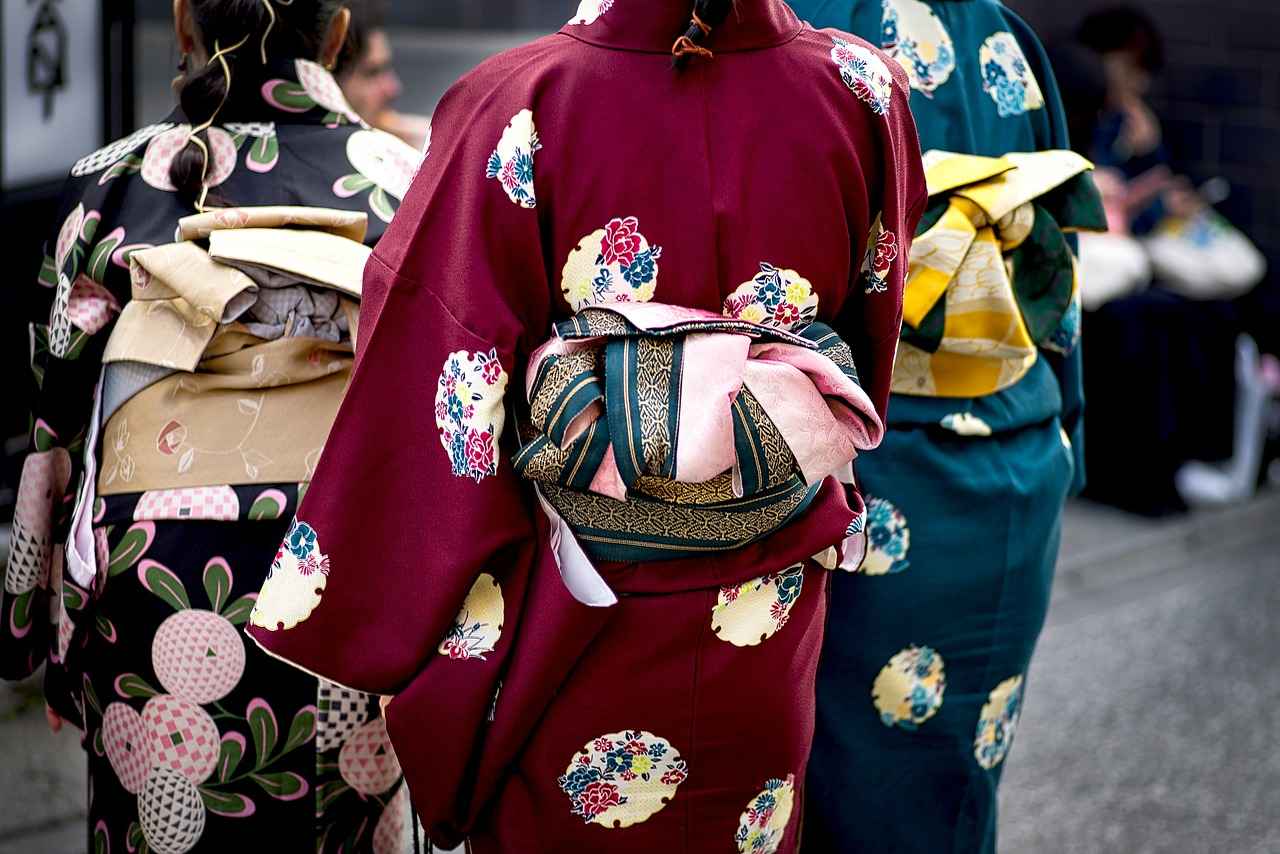
10. Caring for Your Kimono
Caring for Your Kimono
Proper care and maintenance are essential for preserving the beauty and longevity of your kimono. Whether you own a vintage piece or a modern design, understanding how to care for your kimono will ensure it remains in pristine condition for years to come.
- Regular Cleaning: Kimonos should be cleaned regularly to prevent dirt and stains from setting in. Use a gentle detergent and cold water for washing, preferably by hand. If your kimono is made of silk, consider professional cleaning to avoid damage.
- Storing Your Kimono: Proper storage is crucial. Always hang your kimono on a padded hanger to maintain its shape. Avoid folding it for long periods, as this can cause creases. If you must fold it, use a silk cloth to cushion the folds.
- Avoid Direct Sunlight: When storing your kimono, keep it away from direct sunlight to prevent fading. A dark, cool closet is ideal for maintaining the fabric’s vibrant colors.
- Protect from Moths: Use cedar blocks or lavender sachets in your storage area to ward off moths and other pests that could damage your kimono.
- Ironing with Care: If your kimono becomes wrinkled, use a low-temperature setting on your iron, and place a thin cloth between the iron and the fabric to avoid burns or shiny spots.
By following these simple tips, you can ensure that your kimono remains a cherished part of your wardrobe, reflecting its cultural significance and your personal style. Remember, a well-cared-for kimono not only looks beautiful but also tells a story of tradition and craftsmanship.
11. Sustainable Fashion Choices
Kimonos are increasingly recognized as a sustainable fashion choice, particularly when selecting vintage or second-hand pieces. This practice not only promotes eco-friendly habits but also allows individuals to embrace a unique style that is rich in culture and history.
By choosing vintage kimonos, wearers can contribute to reducing waste in the fashion industry. Fast fashion has a significant impact on the environment, leading to pollution and excessive resource consumption. In contrast, opting for pre-loved kimonos means giving these beautiful garments a second life, which is a more sustainable approach to fashion.
Moreover, kimonos are often crafted from high-quality materials that stand the test of time. Unlike many contemporary clothing items that may deteriorate after a few washes, vintage kimonos can last for generations if properly cared for. This durability makes them a wise investment for anyone looking to build a sustainable wardrobe.
In addition to their environmental benefits, wearing kimonos allows individuals to express their personal style. With a myriad of colors, patterns, and fabrics available, each kimono tells its own story. This diversity not only honors traditional craftsmanship but also enables wearers to showcase their individuality.
Furthermore, the cultural significance of kimonos adds another layer to their appeal. By wearing vintage or second-hand kimonos, individuals can participate in a cultural exchange that respects and celebrates Japanese heritage. This appreciation for tradition enhances the overall experience of wearing such garments.
In conclusion, embracing kimonos as a sustainable fashion choice is a meaningful way to promote eco-friendly practices while enjoying a stylish and culturally rich wardrobe. By choosing vintage or second-hand options, individuals can contribute to a more sustainable future without sacrificing aesthetics or quality.
12. Embracing the Kimono Lifestyle
Embracing the Kimono Lifestyle goes beyond merely wearing a beautiful garment; it represents a profound connection to tradition, craftsmanship, and cultural exchange. The kimono, a symbol of Japanese heritage, invites wearers to engage with its rich history and the artistry involved in its creation. By choosing to wear a kimono, individuals can immerse themselves in a lifestyle that appreciates not just the aesthetic appeal but also the stories woven into every fabric.
The act of donning a kimono can transform a simple outing into a celebration of culture. Each kimono tells a unique story, often reflecting the seasonal changes and the wearer’s personality. For instance, summer kimonos adorned with vibrant floral patterns not only keep the wearer cool but also symbolize the beauty of nature in full bloom. This connection to the environment fosters a greater appreciation for the world around us.
Moreover, the craftsmanship behind kimonos is a testament to the skill and dedication of artisans. Many kimonos are handmade, showcasing intricate designs and techniques passed down through generations. By supporting these artisans, wearers contribute to the preservation of traditional crafts, ensuring that these skills are not lost to time.
In addition to cultural appreciation, wearing a kimono promotes cultural exchange. As more people around the globe discover the beauty of kimonos, they engage in conversations about Japanese culture, fostering understanding and respect. This exchange enriches personal experiences and broadens perspectives, making the kimono a bridge between different cultures.
In conclusion, embracing the kimono lifestyle is about more than fashion; it is a celebration of heritage, artistry, and intercultural dialogue. Whether worn for special occasions or as part of daily life, kimonos invite individuals to reflect on their place within a larger cultural tapestry, enriching their experiences and fostering a deeper connection to the world.
Frequently Asked Questions
- What are the main benefits of wearing a kimono in summer?
Wearing a kimono during summer offers numerous benefits, including cultural appreciation, comfort due to breathable fabrics, and the ability to express personal style. The lightweight materials like cotton and silk help keep you cool while showcasing beautiful seasonal patterns.
- How do I choose the right kimono for summer?
When selecting a kimono for summer, focus on lightweight fabrics such as cotton, which are perfect for hot weather. Additionally, consider vibrant colors and floral patterns that reflect the season’s beauty, ensuring you feel both stylish and comfortable.
- Can kimonos be worn for different occasions?
Absolutely! Kimonos are incredibly versatile and can be dressed up or down for various occasions, from casual outings to formal events. With the right accessories and styling, you can create a look that fits any summer gathering.
- What are some tips for caring for my kimono?
To maintain your kimono’s beauty and longevity, it’s essential to follow proper care techniques. Always check the care label for washing instructions, store it in a cool, dry place, and consider using a garment bag to protect it from dust and damage.
- Are kimonos a sustainable fashion choice?
Yes! Opting for vintage or second-hand kimonos promotes sustainable fashion practices. By choosing these pieces, you not only embrace unique styles but also contribute to eco-friendly practices in the fashion industry.






